Life Cycles of Ticks
Life Cycles of Ticks
Troublesome Ticks
The National Pest Management Association (NPMA) lists ticks as one of the most dangerous pests How Are Stinging Pests Treated?due to their tendency to transmit a variety of highly dangerous diseases. Tickborne diseases range from mild symptoms such as fever/chills, aches/pains, and rash, to severe medical emergencies that can require hospitalization. In the US, ticks are well known for transmitting both Lyme disease and the Rocky Mountain Spotted Fever along with a host of other serious illnesses. In the Midwest, some of the most common tick species include the American dog tick, Black-legged tick/deer tick, Brown dog tick, Groundhog tick, and the Lone Star tick. The life spans of ticks can vary depending on the particular species of tick you are dealing with. But, no matter the species, these arachnids go through three life phases before adulthood: egg, larva, and nymph. 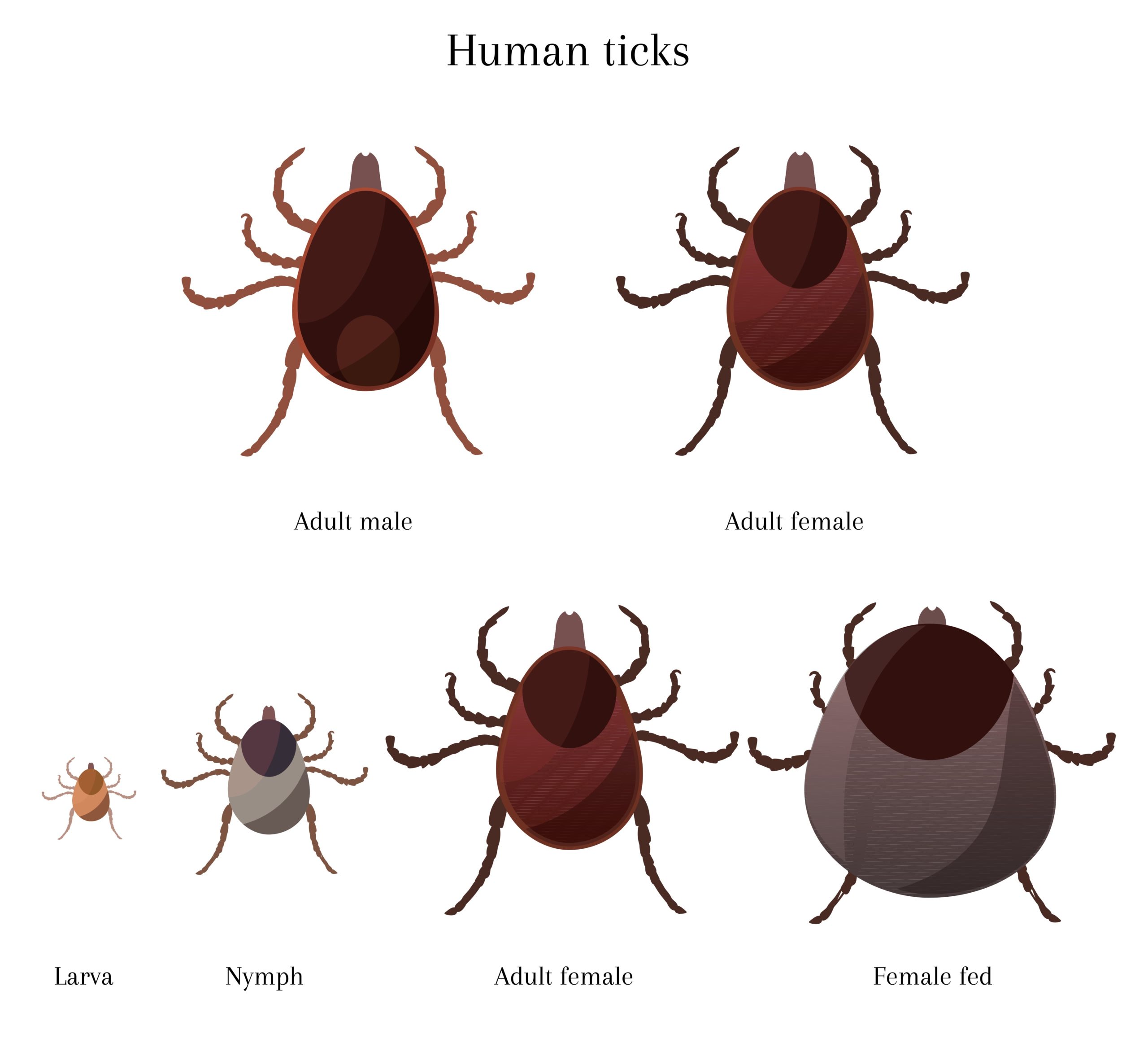
Eggs
Female ticks produce eggs after indulging in a blood meal. Depending on the species, females can lay roughly 1000-6,000 eggs on one blood meal. But, as tick death rates are rather high due to predators and other external factors, a good portion of the eggs do not mature to adulthood. The eggs are sticky and are laid in clumps that stick together. They’re very small, round/oval in shape and can be a variety of colors including cream/yellowish, light brown, dark brown, orange/brown, or red/brown. 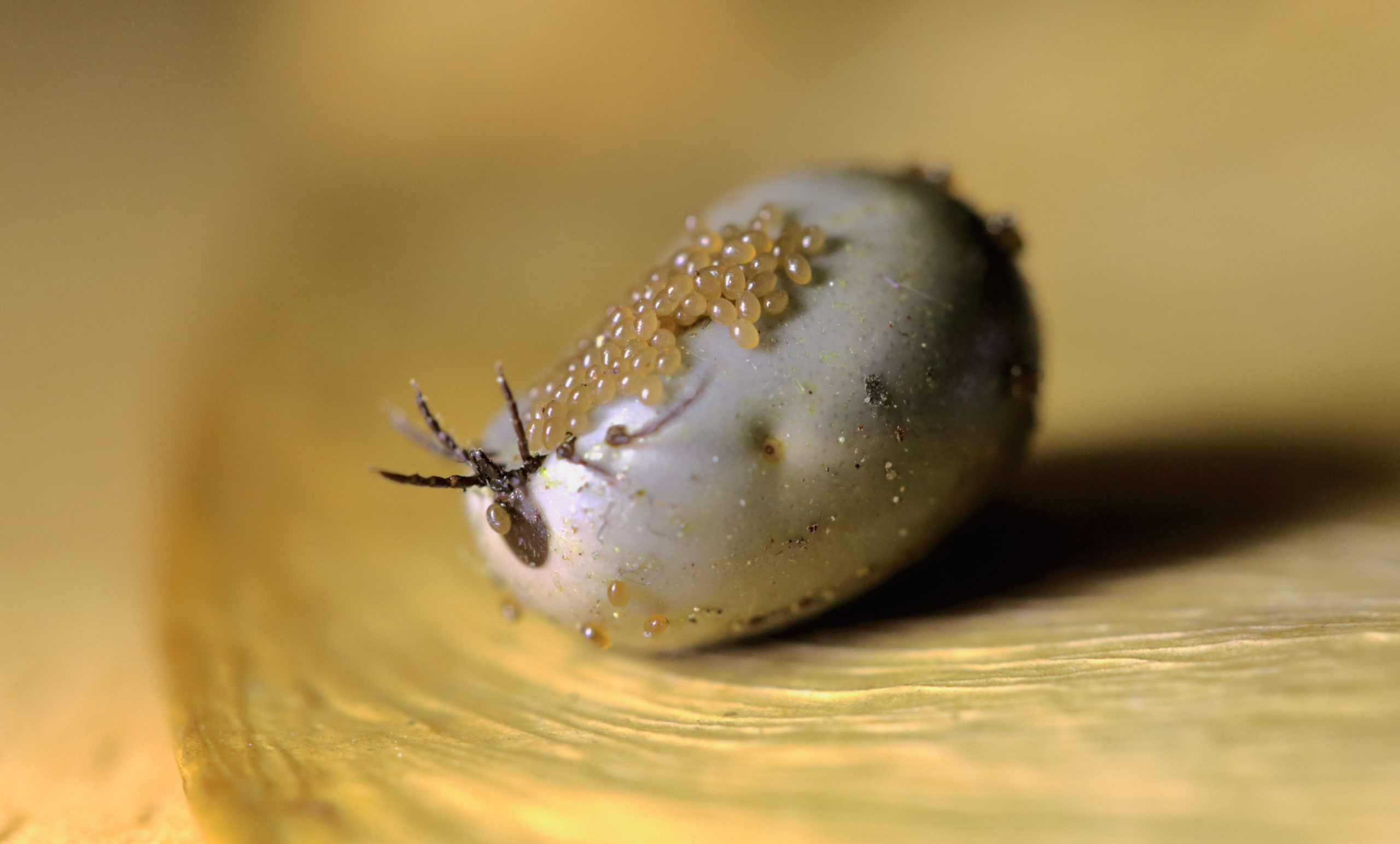
Larvae
Eggs tend to hatch around June/July, at which time the larvae emerge to seek out their first blood meal. It is often these first meals that ticks become infected with pathogens that they can pass on to later hosts. These tiny larvae greatly resemble the adults of their species, though they have only 6 legs at this time (as opposed to 8) and are often lighter in color. Following their first blood meal, the adolescent ticks drop from their host in order to molt into their next stage. 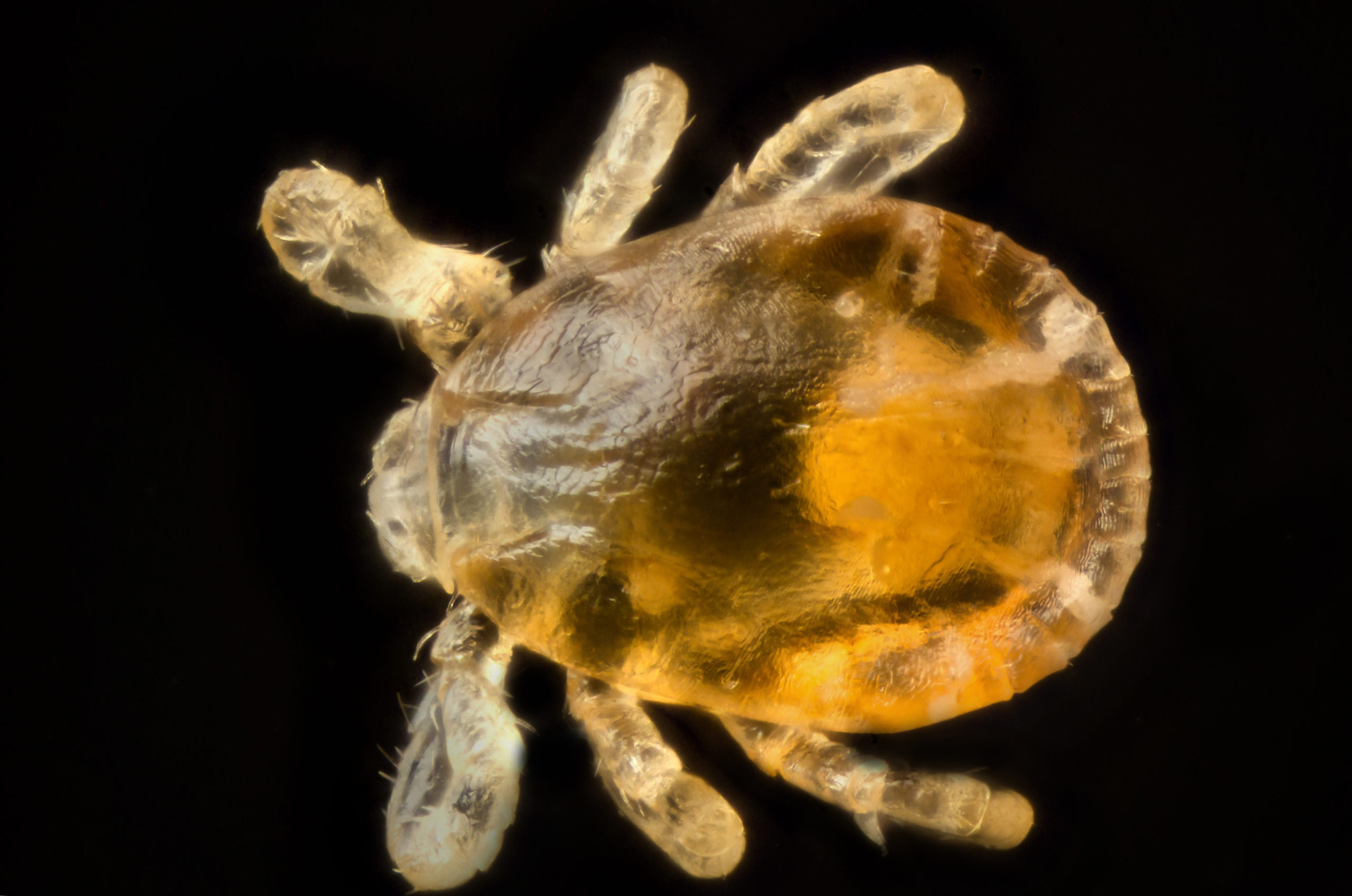
Nymphs
As nymphs, the ticks now have their final set of legs, totaling eight legs all together. They seek out a host for their second blood meal which can often lead to them contracting different disease-causing organisms that they pass in adulthood. After this meal, the ticks once again drop from their host into their surrounding environment to molt one final time into an adult. 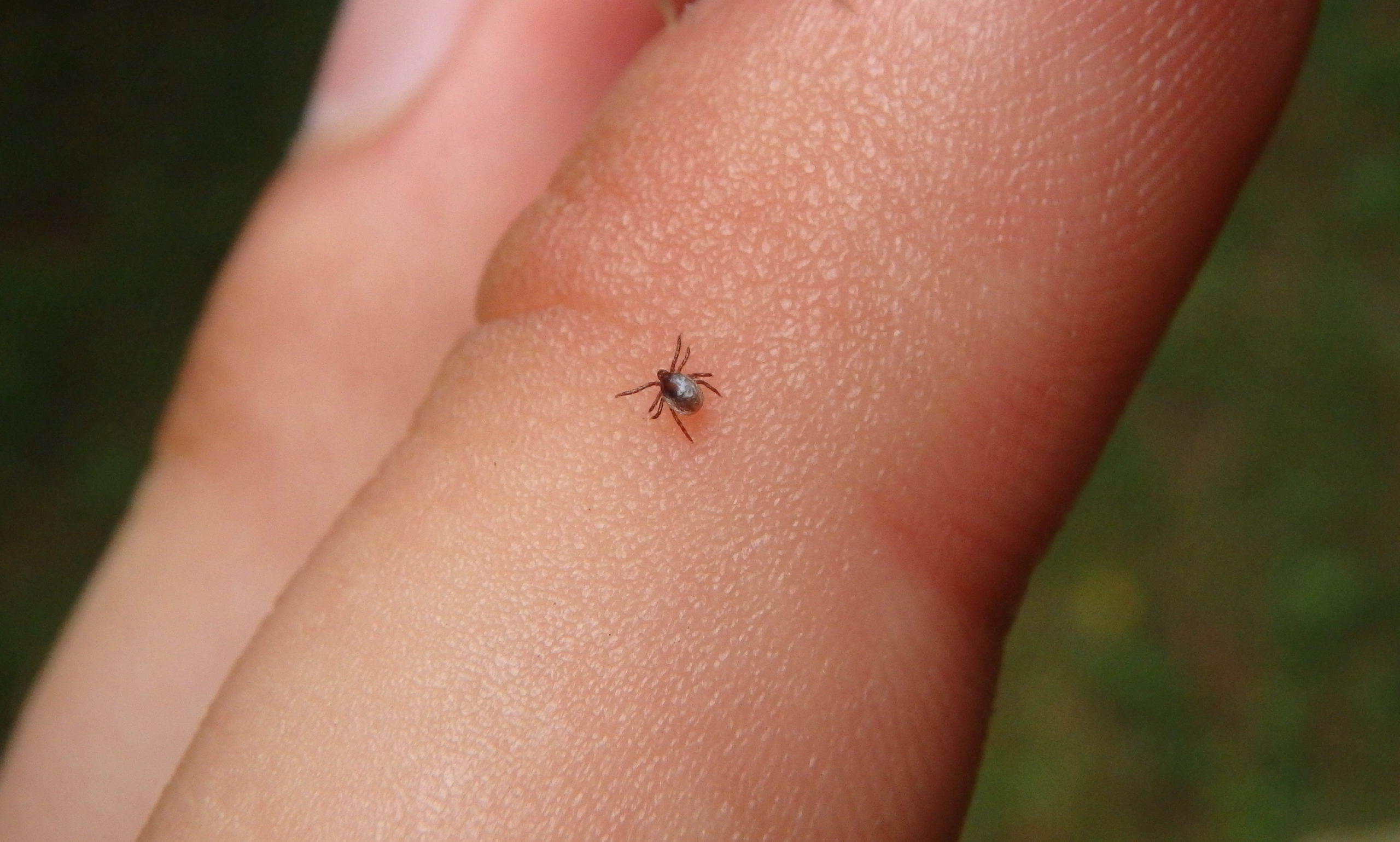
Adults
The size of the ticks can vary throughout each stage depending on the environmental conditions and genetics but, on average, adult ticks measure about 3/16th to 1/2 of an inch depending on if they are swollen with a meal or not. Adult ticks seek out yet another new host in order to feed and mate, producing the next generations of offspring. 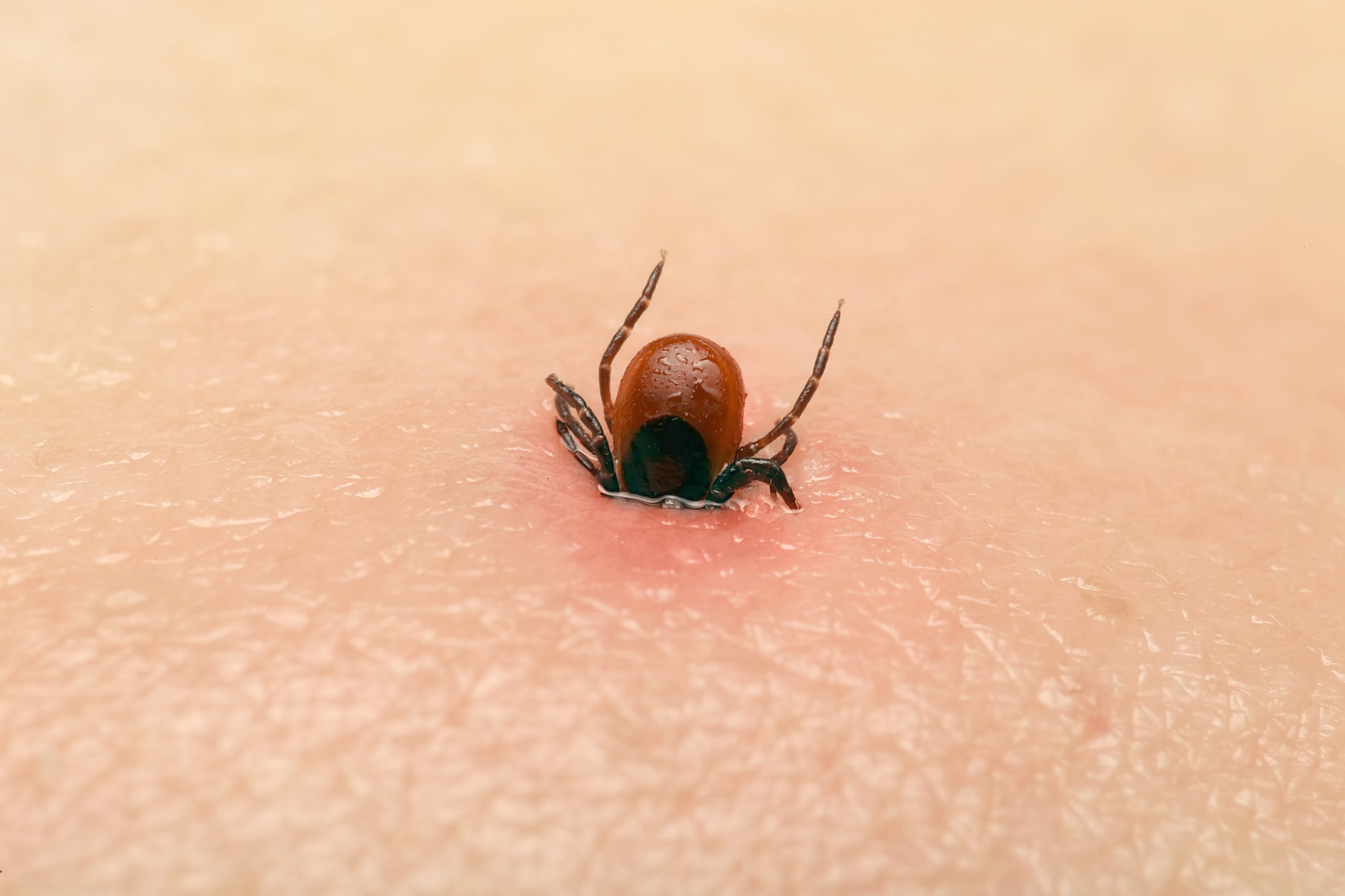
Staying Safe from Ticks
While most common between April and September, tick exposure can occur year-round, so it’s important to be aware of where you may encounter ticks and how to properly avoid these bloodsucking arachnids. When hiking or camping, avoid extremely heavily wooded areas with extensive foliage – walk in the center of trails and pitch your tent in a clearing. After spending time outdoors, you will always want to examine yourself, your clothing, and your pets carefully for any ticks. The sooner you spot a tick, the better chance you have of removing it before it can latch on to you and transmit harmful pathogens into your bloodstream. For the best tick protection around your home, you’ll want to schedule routine Mosquito/Tick Treatments. Along with warding off ticks and mosquitos from your yard, these treatments also eliminate fleas, which can be a major concern for pet owners. Your local technician will do a complete treatment of your home, even eliminating mosquito areas of safe harbor around your yard, to best safeguard your family and home from those pesky vectors of disease.

Citations
Common Ticks (2020) The Illinois Department of Public Health. Available at: https://www.dph.illinois.gov/topics-services/environmental-health-protection/structural-pest-control/common-ticks (Accessed: September 2020).
Hill, C. and MacDonald, J. (2008) Purdue University. The College of Agriculture: Entomology. Available at: https://extension.entm.purdue.edu/publichealth/insects/mosquito.html#top (Accessed: April 2020).
How Ticks Spread Disease (2020) Centers for Disease Control and Prevention. The National Center for Emerging and Zoonotic Infectious Diseases – Division of Vector-Borne Diseases. Available at: https://www.cdc.gov/ticks/life_cycle_and_hosts.html (Accessed: 2021).
Guide to Different Tick Species and the Diseases They Carry (2019) Mayo Clinic. Mayo Foundation for Medical Education and Research. Available at: https://www.mayoclinic.org/tick-species/sls-20127911 (Accessed: April 2020).
Preventing Tick Bites (2019) Centers for Disease Control and Prevention. The National Center for Emerging and Zoonotic Infectious Diseases and the Division of Vector-Borne Diseases. Available at: https://www.cdc.gov/ticks/avois/on_people.html (Accessed: April 2020).
Tick lab (no date) The University of Maine Cooperative Extension. Available at: https://extension.umaine.edu/ticks/tick-biology/ (Accessed: August 2, 2021).
Request a Free Quote Today
(We do not share your data with anybody, and only use it for its intended purpose)


